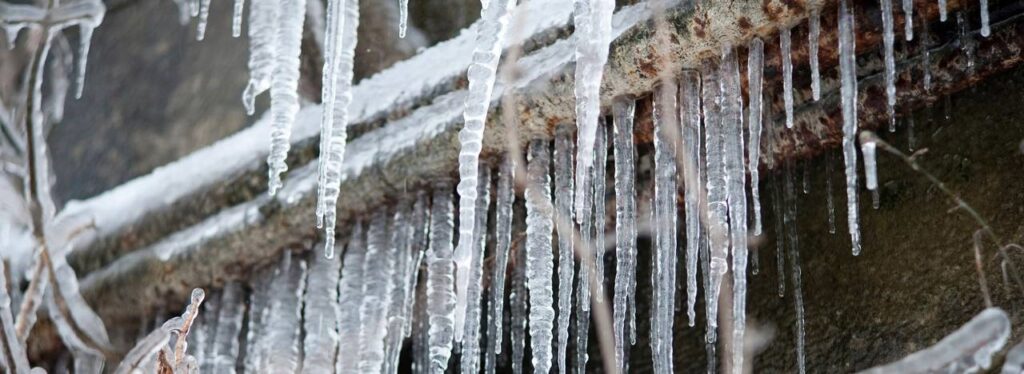Protecting Your Pipes from Cold Weather: Effective Strategies
Protecting Your Pipes from Cold Weather: Effective Strategies
Blog Article
We have found the article pertaining to 6 Ways to Prevent Frozen Pipes down the page on the net and felt it made perfect sense to talk about it with you on this page.

Winter can damage your plumbing, especially by freezing pipes. Right here's how to stop it from taking place and what to do if it does.
Intro
As temperatures decrease, the threat of frozen pipes rises, possibly causing pricey repair work and water damage. Comprehending how to prevent frozen pipelines is vital for property owners in cold climates.
Prevention Tips
Protecting prone pipelines
Cover pipes in insulation sleeves or use warmth tape to shield them from freezing temperatures. Focus on pipes in unheated or external areas of the home.
Home heating strategies
Keep indoor areas adequately warmed, particularly locations with pipes. Open up cupboard doors to permit warm air to distribute around pipes under sinks.
Exactly how to recognize icy pipelines
Seek lowered water circulation from faucets, uncommon odors or sounds from pipelines, and noticeable frost on subjected pipes.
Long-Term Solutions
Structural adjustments
Take into consideration rerouting pipelines away from exterior wall surfaces or unheated areas. Add extra insulation to attics, basements, and crawl spaces.
Upgrading insulation
Purchase premium insulation for pipelines, attics, and wall surfaces. Appropriate insulation aids maintain consistent temperature levels and lowers the threat of frozen pipes.
Securing Exterior Pipes
Yard hose pipes and exterior taps
Disconnect and drain garden pipes before winter season. Mount frost-proof faucets or cover outside taps with shielded caps.
Comprehending Icy Pipes
What causes pipes to freeze?
Pipelines freeze when revealed to temperatures listed below 32 ° F (0 ° C) for prolonged durations. As water inside the pipelines ices up, it broadens, taxing the pipeline wall surfaces and possibly causing them to rupture.
Dangers and problems
Frozen pipes can bring about water interruptions, property damages, and expensive repairs. Ruptured pipelines can flooding homes and trigger extensive structural damage.
Indications of Frozen Pipeline
Identifying icy pipelines early can avoid them from breaking.
What to Do If Your Pipelines Freeze
Immediate actions to take
If you think frozen pipes, maintain taps open to alleviate stress as the ice thaws. Use a hairdryer or towels taken in warm water to thaw pipelines gradually.
Conclusion
Preventing frozen pipelines requires proactive procedures and quick feedbacks. By comprehending the causes, indicators, and safety nets, homeowners can shield their pipes throughout cold weather.
5 Ways to Prevent Frozen Pipes
Drain Outdoor Faucets and Disconnect Hoses
First, close the shut-off valve that controls the flow of water in the pipe to your outdoor faucet. Then, head outside to disconnect and drain your hose and open the outdoor faucet to allow the water to completely drain out of the line. Turn off the faucet when done. Finally, head back to the shut-off valve and drain the remaining water inside the pipe into a bucket or container. Additionally, if you have a home irrigation system, you should consider hiring an expert to clear the system of water each year.
Insulate Pipes
One of the best and most cost-effective methods for preventing frozen water pipes is to wrap your pipes with insulation. This is especially important for areas in your home that aren’t exposed to heat, such as an attic. We suggest using foam sleeves, which can typically be found at your local hardware store.
Keep Heat Running at 65
Your pipes are located inside your walls, and the temperature there is much colder than the rest of the house. To prevent your pipes from freezing, The Insurance Information Institute suggests that you keep your home heated to at least 65 degrees, even when traveling. You may want to invest in smart devices that can keep an eye on the temperature in your home while you’re away.
Leave Water Dripping
Moving water — even a small trickle — can prevent ice from forming inside your pipes. When freezing temps are imminent, start a drip of water from all faucets that serve exposed pipes. Leaving a few faucets running will also help relieve pressure inside the pipes and help prevent a rupture if the water inside freezes.
Open Cupboard Doors
Warm your kitchen and bathroom pipes by opening cupboards and vanities. You should also leave your interior doors ajar to help warm air circulate evenly throughout your home.

I'm just very inquisitive about Helpful Tips to Prevent Frozen Pipes this Winter and I am hoping you enjoyed reading my article. Do you know about somebody who is fascinated about the niche? Take a moment to promote it. Thank-you for your time spent reading it.
Contact Report this page